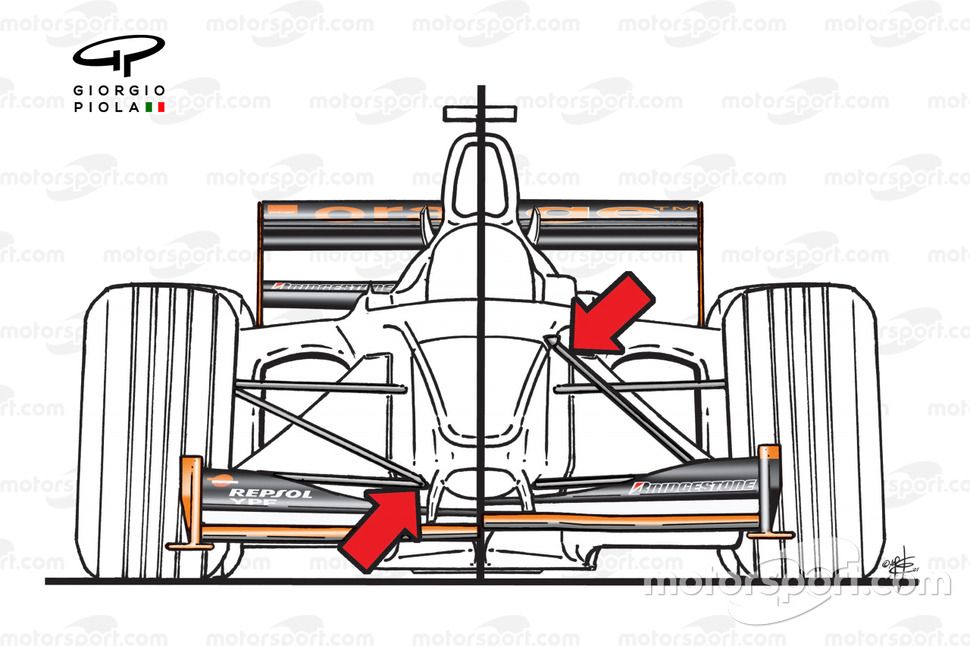But it would be a mistake to think that the RB19 was so good just because of downforce, as there have been plenty of indications that suspension’s impact on its vehicle dynamics was a critical element of its success too.
This isn’t to say aero was not important, as it became clear just how much of a trendsetter Red Bull was in this area last year.
There were times when this was especially visible, like the underside of the floor. When this website got a rare look under the revamped Mercedes floor in Monaco, following Lewis Hamilton’s practice crash, it showed similarities to the 2022 Red Bull.
A later crash by Sergio Perez showed that Red Bull had developed the floor considerably in the meantime, including a more complex profile of the underbody and kick points towards the rear of the floor.
It was not only the floor where the differences lay though. Because the sidepods are a defining element for the appearance of modern F1 cars, most attention goes to them.
This all means that suspension choice has been somewhat overlooked, but the role it plays in the overall concept of a car and therefore in its success cannot be underestimated.
The biggest variability in this area is between pull-rod and push-rod layouts. Both variants are shown side-by-side below on a drawing of an Arrows A21 and A22, with the pull-rod suspension on the left side of the image and the push-rod on the right.
In the pull-rod suspension, the rod is positioned lower in the chassis and connected to a higher point on the wheel assembly. Over bumps and kerbs, the rod pulls on the torsion spring, which immediately explains the name.
The push-rod configuration is the exact opposite. The push-rod, together with all internal suspension parts, sits higher in the chassis and runs diagonally to a lower point on the wheel assembly.
When the wheel moves up in response to the track, the spring is pushed into compression by the pushrod. The rod therefore pushes the torsion spring instead of pulling it when a car hits the bumps or kerbs.
With the introduction of the current ground effect regulations, the pull-rod at the front of the car made a return.
F1 had previously last seen a pull-rod front suspension in 2013, after which from 2014 to 2021 push-rods dominated.
Pull-rod and push-rod suspensions have different advantages and disadvantages, partly related to where the weight of the suspension components are placed.
The pull-rod gets lower into the chassis, which…
Click Here to Read the Full Original Article at Motorsport.com – Formula 1 – Stories…

